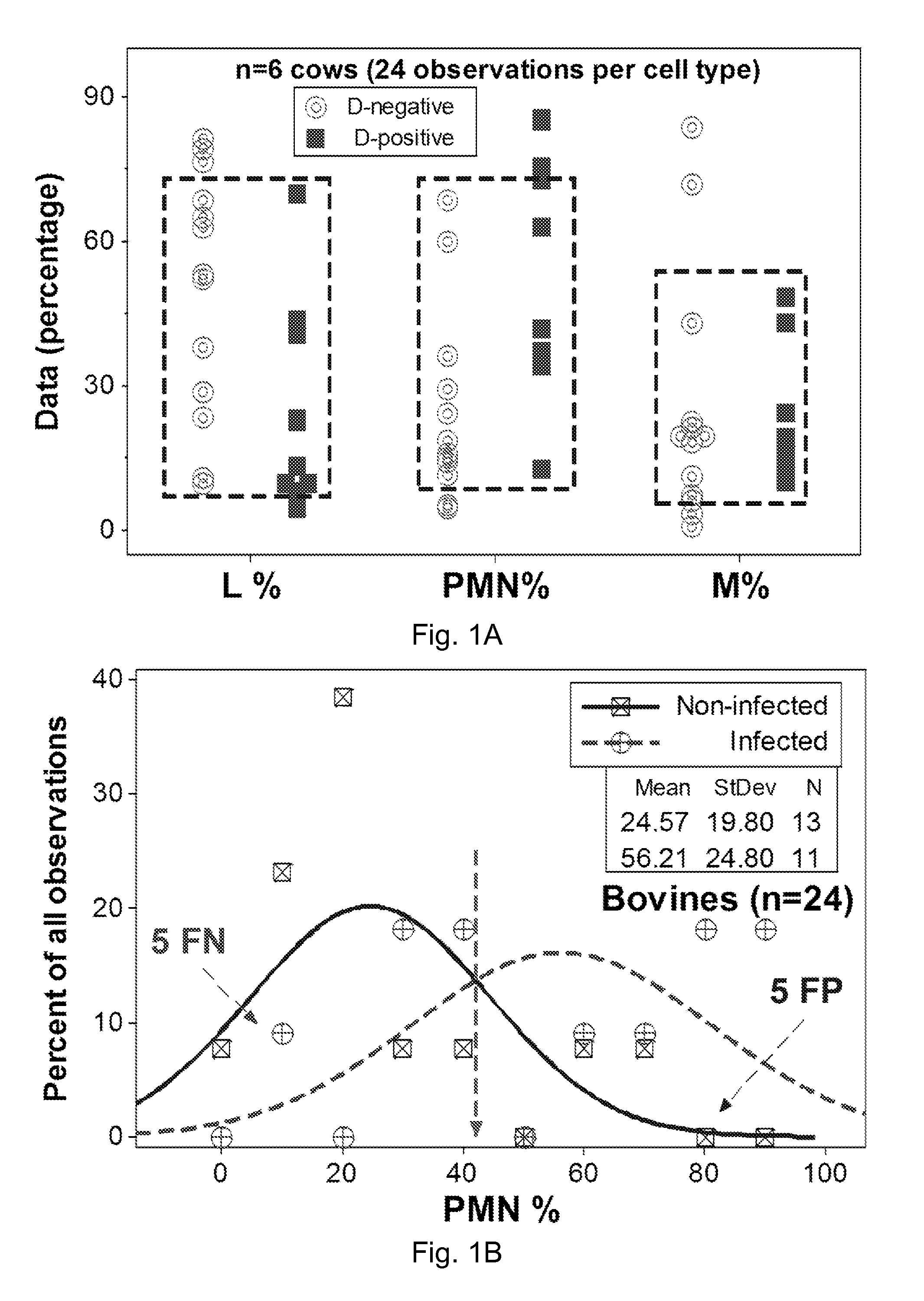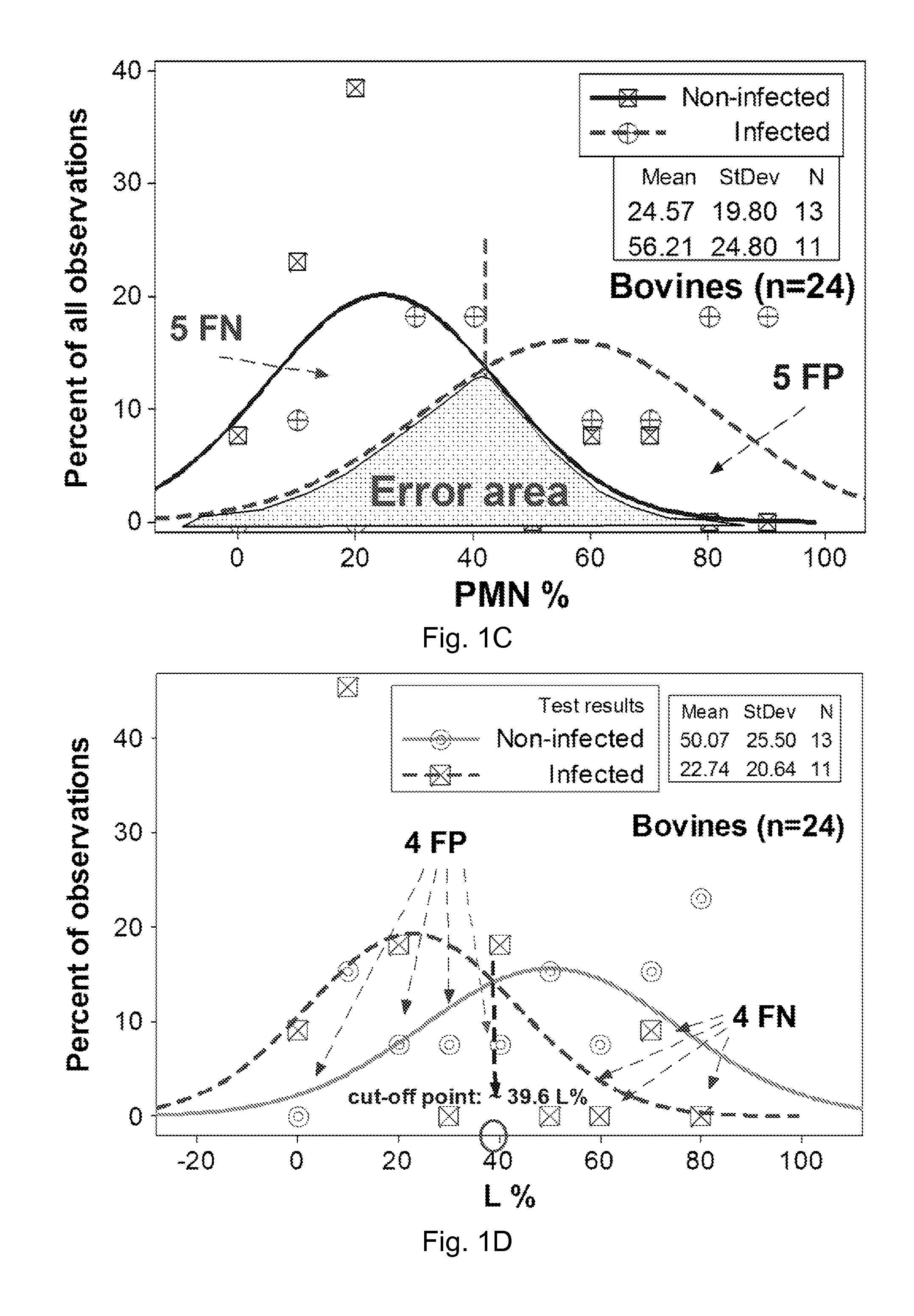Method for Identifying Altered Leukocyte Profiles
- Summary
- Abstract
- Description
- Claims
- Application Information
AI Technical Summary
Benefits of technology
Problems solved by technology
Method used
Image
Examples
Embodiment Construction
[0047]One embodiment of the present invention is a method for identifying altered leukocyte profile by pattern recognition. The identified altered leukocyte profile may indicate inflammation, exposure to a pathogen, infection, or exposure to a pathogen and subsequent recovery. In one embodiment, the identified altered leukocyte profile indicates false positives or negatives based on spatial location. In another embodiment, the identified altered leukocyte profile indicates a temporal stage of an infection, or any other altered condition.
[0048]The method comprises the step of receiving 101 counts or relative percentages of leukocyte cell types in a biological fluid. In one embodiment, the biological fluid is blood, saliva, milk, peritoneal fluid, cerebrospinal fluid, urine, or any other fluid derived from an individual's body which contains leukocytes. In one embodiment, the biological fluid is a synthetic fluid, such as a buffer, comprising leukocytes.
[0049]In one embodiment, the le...
PUM
 Login to View More
Login to View More Abstract
Description
Claims
Application Information
 Login to View More
Login to View More - Generate Ideas
- Intellectual Property
- Life Sciences
- Materials
- Tech Scout
- Unparalleled Data Quality
- Higher Quality Content
- 60% Fewer Hallucinations
Browse by: Latest US Patents, China's latest patents, Technical Efficacy Thesaurus, Application Domain, Technology Topic, Popular Technical Reports.
© 2025 PatSnap. All rights reserved.Legal|Privacy policy|Modern Slavery Act Transparency Statement|Sitemap|About US| Contact US: help@patsnap.com



